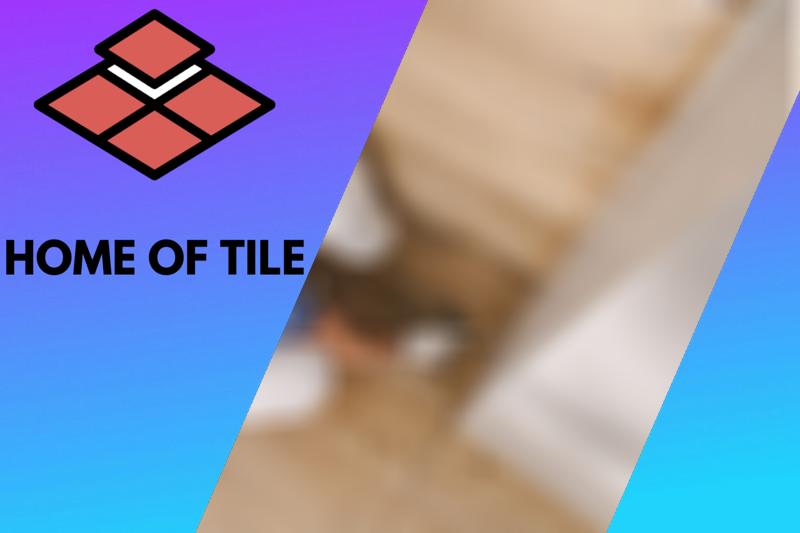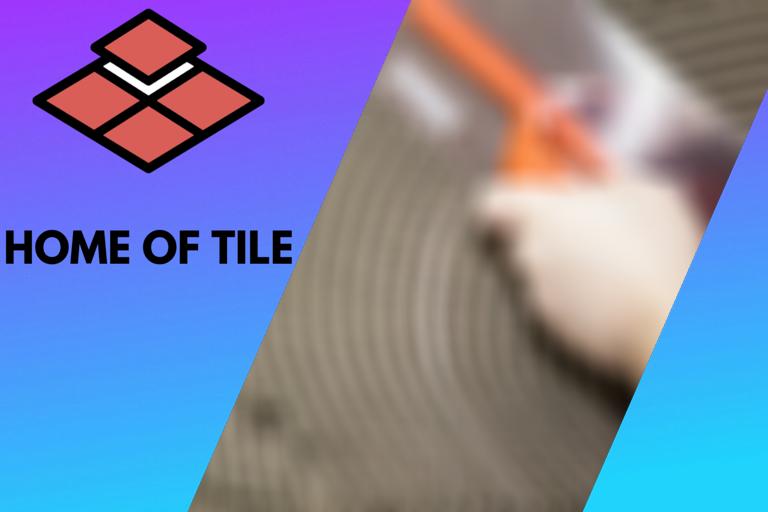Cleaning Grout After Tiling, 5 things you should know
Grout is a mixture of minerals, sand, and cement used after tiling to fill narrow gaps between the tiles and ensure a neat finish. After application, it must be cleaned off immediately before it dries solid and becomes tough to remove. Grout dries quickly and can be very frustrating and time-consuming to get rid of once left on for too long.
Hardened grout can be removed by spraying a cleansing solution over the surface and by scrubbing it with the help of a cloth or sponge. If the grout has been left on for too long and has become solid, you will need to use special grout haze removers to clean it. The best approach is to clean the grout as soon as it dries and the tile is laid down.

This article will provide you information about the best methods to clean excess grout out from your freshly laid tiles. It will discuss the pros and cons of numerous methods that can be used to clean grout and give tips on removing hardened grout without causing any damage to the tiles.
Contents
What Causes Grout Haze
The materials that make up the grout are mixed with water to create a thick and dense solution used to secure tiles. The grout is applied on the surface with a rubber float. At some point, the tile is entirely covered with grout, but any excess will be scraped off. When it dries, a thin film remains on the surface of the tile. This residual thin film is known as “grout haze,” is a normal part of tiling.
Cleaning Grout Haze After Tiling
Grout haze is a semi-white film left on the tiles after grouting. Regardless of whether you have repeatedly wiped down the surface with a wet cloth, grout haze will remain on the tile until you take extraordinary measures. Normal floor cleaning techniques won’t eliminate it. Removing grout haze can be made simpler with the use of an effective grout haze remover.
The first thing to do after tiling is to clean the tiles with a sponge damped in warm water. This will help drastically. If this does not work and the condition is severe, you can remove the haze using other methods. There are different methods to remove grout haze depending on the type of tiles and the hardness of the contamination.
● Removing Grout Haze with Water and Cheesecloth
This is the simplest method to remove grout haze from the tiles, as most people have these items in their house. Dip the cheesecloth or towel in warm water and wring it. Too much water can damage the grout, so make sure that you wring the cheesecloth thoroughly. Then, gently wipe the tile surface with the damp cheesecloth or sponge to remove the excess.
● Removing Grout Haze with a Vinegar Solution
Make a Vinegar solution from water and vinegar. Use 50% water and 50% vinegar, and use it to wipe the grout haze off the tiles.
If you have installed porcelain or ceramic tiles, you can use a mixture of vinegar and water to eliminate the grout haze. The vinegar acts to dissolve the lime residues that make up the grout haze. Mix the vinegar and water following 1:4 concentration, which means mixing 1-part of vinegar to 4-parts of water. Pour this mixture into a bucket or a spray bottle. You can increase the concentration of vinegar to increase the strength of the solution up to 1:1.
Clean the tiles with water before applying the vinegar-water mixture. Use a nylon pad or a mop to clean the tiles with the mixture. If you have installed slate or natural stone tiles, then avoid using the vinegar-water mixture to wipe the grout haze as the acid in the mixture will damage your tiles. Cleaning grout off of tile with vinegar is safe and effective for ceramic and porcelain tiles and grout. However, these acidic cleaners should never be used on porous or stone tiles.
● Using Haze Remover to Remove Grout Haze
You can use a special grout haze remover available in the hardware stores if the vinegar-water mixture has not proved to be effective in the removal.
Grout haze remover contains strong acids. This acid must be diluted with water before use. The tenacity of the problem guides to determine the amount of acid to be diluted with water. It is recommended to dilute 1 part per 10 to 20 parts of water. Apply the haze remover with a brush, and always wear gloves and safety glasses to protect yourself.
If the grout has dried immensely, you may need to scratch the tiles for effective removal of the haze. You can use a window scraper for this purpose. Scratch away the excess dried grout carefully so as not to damage the tiles.
Caution: If you have installed natural stone on the wall or floor, then never use acidic haze remover or a vinegar solution to remove grout haze. Natural stones like marble, granite, travertine contain lime and are sensitive to acidic solution and corroded by acid. Acidic haze removers can cause discoloration and corrosion of the natural stones. For these materials, you must use alkaline cleaners to clean the grout haze.
Cleaning Up Grout Lines After Tiling
Cleaning the grout lines between the clean tiles is also important, especially when the tiles have been installed for a long time. For newly installed tiles, the grout lines can be cleaned with the help of a cheesecloth or a sponge.
Clean the grout lines with a wet sponge or cheesecloth immediately after the grout has dried. You can check whether the grout has dried sufficiently by brushing your fingers over the joints and checking if anything sticks to your fingers or not. If the grout has become hard, you can use a vinegar solution or grout haze remover to clean the grout lines.
Over time, grout lines tend to turn black or brown due to dust and dirt. How grimy and grubby a grout may get depends on what it is made of and how trafficked the area is. The grout lines get grimy even if you clean the tiles regularly, as your brush is not able to reach the surface in the grout lines.
Stains in the grout lines can be cleaned by different solutions, which are explained as follows.
1. Scrub dirty grout lines with warm water and brush
Spray warm water on the grout lines and scrub in a circular motion with a brush. You can use an old toothbrush for this purpose.
2. Spray grout lines with vinegar mixed with warm water
If simple warm water doesn’t work well, you may use a vinegar solution to eliminate the dirt in the grout lines. Pour a mixture of 50% vinegar and 50% water in a spray bottle and spray the solution over the dirty grout lines. Scrub over the grout lines with the help of a brush.
3. Baking soda and water
To add to the cleansing strength, you may use a paste of baking soda and spray it in addition to vinegar. As the mixture stops foaming, you can scrub the grout lines with the brush and rinse thoroughly with water.
4. Hydrogen Peroxide
You can also use a paste of baking soda and hydrogen peroxide to clean the grout lines which are heavily covered with dirt. Hydrogen peroxide is available in most drug stores, and it helps in cleaning moderate stains.
5. Oxygen Bleach
Oxygen bleach is one of the best ways to clean tougher stains and grimy grout lines. Mostly this product is available in powdered form. You can form a solution by adding water to the powder and spray it on the grout lines. Scrub the solution with the help of a small brush. Wait for 10 to 15 minutes before rinsing the solution. Always rinse the solution with clean water.
Keep the grout lines clean
The best approach is to spray it with vinegar and wipe it down once per week to keep the grout lines clean. You can likewise wipe grout lines with other cleansing solutions to keep them dirt-free. Only a couple of spritzes and wipes a week can save you a great deal of time and extra effort and help clean and maintain the appealing appearance of your home.
How to Remove Extra Hardened Grout from the Tiles
To remove hardened grout from the tiles, you can use warm water, vinegar, or other acidic solutions. The solution will dissolve the hardened grout and make it easier to remove. Rub over the grout with a cheesecloth or a sponge. Once the grout is removed from the tile, wipe the tile with a clean damped cloth and leave it to dry. You may polish the tile with a dry cloth once it is dry.
The grout used for the floor tiles is stronger and warm water will not be enough to dissolve these cement-based grouts. You can use a patio or brick cleaner to remove the hardened grout from floor tiles. Always wear hand gloves and eye protection while using these cleaners as they are highly acidic.
You can use sugared water, vinegar, and other acidic solutions to dissolve the hardened grout. If the grout is hard enough, then you can use a nylon scouring pad. It is more abrasive than a sponge and helps to remove hardened grout effectively. You need to be more careful while using it as it might also cause damage to the tiles.
Wire wool is the most abrasive tool for hard grout, but it can also create scratches on the tile’s surface. It may also leave metal marks on the tile, so you need to be careful before using this tool to remove hardened grout.
A perfect material to remove excess hardened grout is wood. Once you have moistened the grout with the help of warm water or some acidic solution, wood can help to remove the hardened grout from the surface of the tile without causing any damage to the tile.
How to Minimize Grout Haze
It is always said that prevention is better than cure. To minimize the inconvenience of grout haze, you can consider the following things.
- Wipe the tiles immediately: Wipe the tiles with a wet sponge immediately after the grout has dried. You can check whether the grout has dried sufficiently by brushing your fingers over the joints and checking if anything sticks to your fingers or not.
- Don’t wipe too hard: While wiping the grout, make sure that you don’t wipe too hard. Wiping too hard may pull out the grout of the joints.
- Remove access grout while working: While grouting, make sure that you drag off as much grout as you can with the rubber float. If more grout remains on the tiles, you will experience a greater problem.
- Edge of a Rubber float: Use the edge of the rubber float to remove the excess grout off the tiles by pulling it towards you and away from the tiles.
- Use a tile sponge: Use a tile sponge instead of a household cleaning sponge to wipe excess grout. A tiling sponge is dense and large in size. Dampen the sponge lightly while wiping the grout and prevent it from digging into seams and joints.
- Looks can be deceiving: After removing the grout with a damp sponge, it may seem that the grout haze is gone, but actually, this is not the case. The grout may appear to be wiped, but this is only because the surface of the tile is wet. As soon as the tile dries, the haze may reappear. This is the time for haze remover.
Final Word
Grouting is a normal part of tiling, and it is done to achieve a nice finish and fill the narrow gaps between the tiles. Grout is made up of a mixture of sand, minerals and, cement. One of the grout properties is that it dries quickly, and hence it needs to be cleaned before it completely dries or becomes hard. It is easy to remove if cleaned within the appropriate time. However, hardened grout can also be cleaned, but it makes the task hard and time-consuming. The most common way to clean the hardened grout is to dissolve the grout first with the help of warm water or a cleansing solution and then wipe it off with a clean cloth or sponge.








